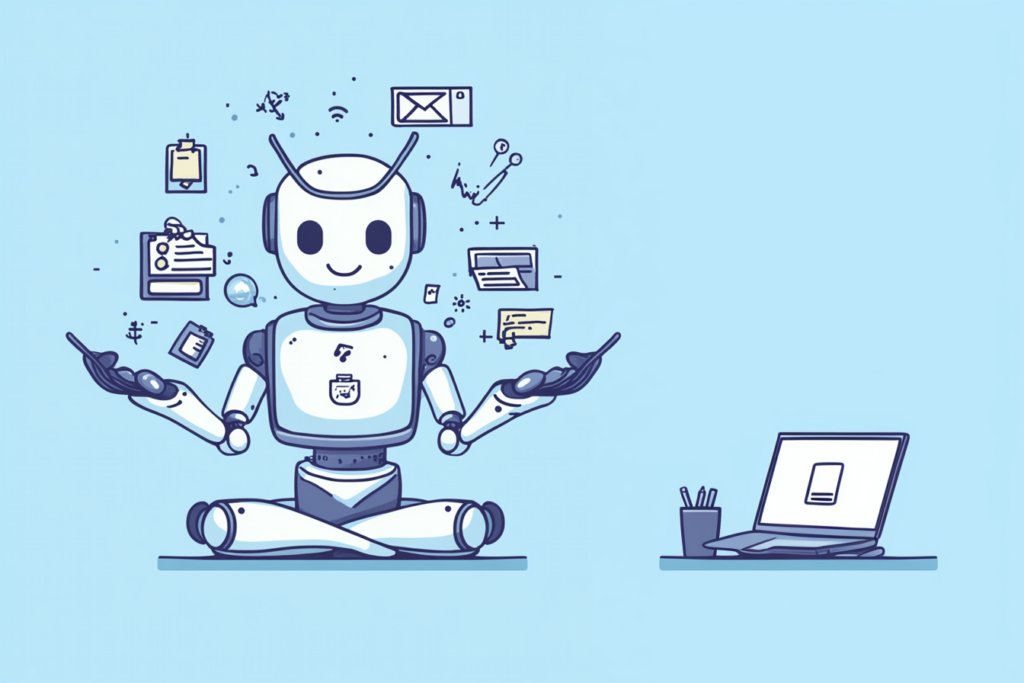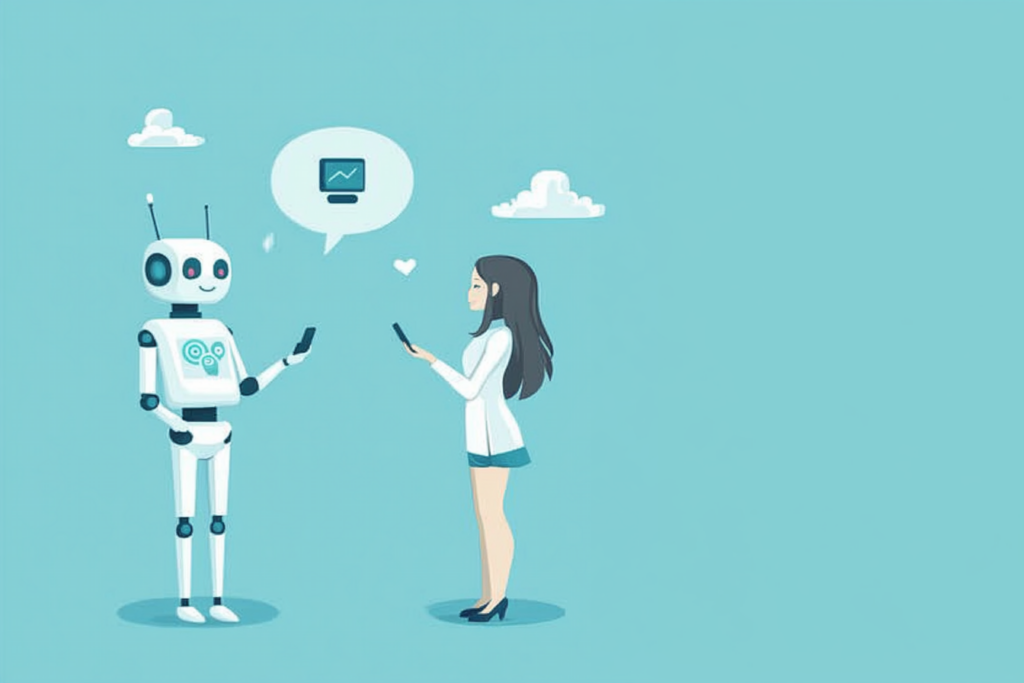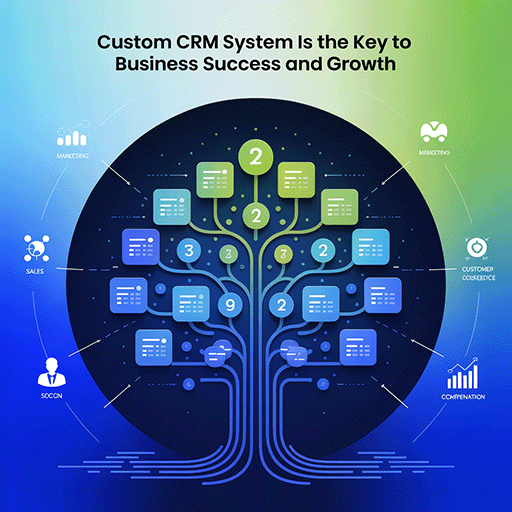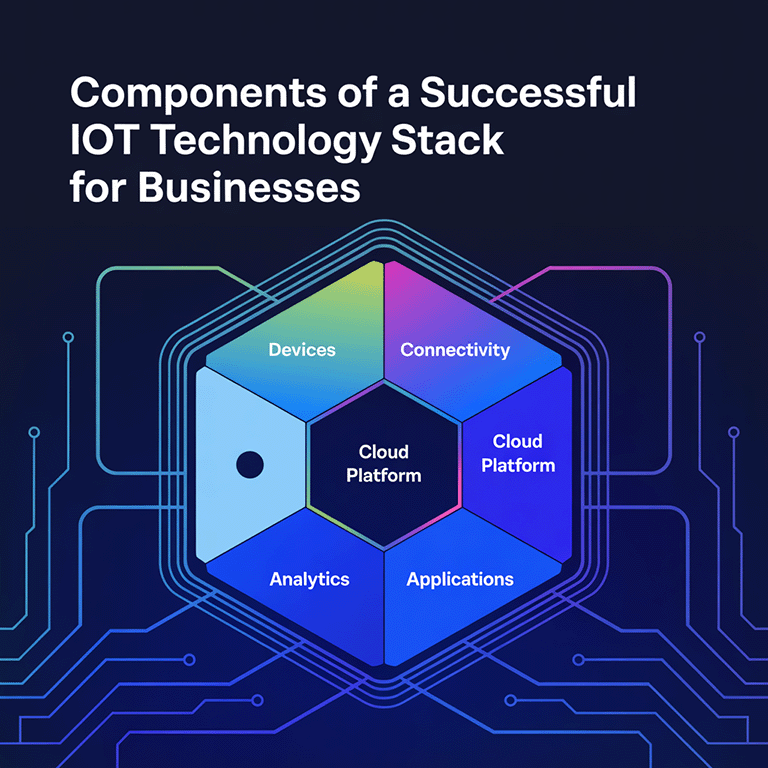Businesses seek innovative solutions to enhance customer engagement, streamline operations, and improve overall efficiency in today’s fast-paced digital environment. Two of the most famous choices include chatbots and AI virtual assistants.
The adoption of these technologies is immense. 60% of millennials have reported using chatbots, and of those, 70% have had positive experiences. Expectedly, 70% of Gen Z actively use generative AI in their daily lives. Today, not using an AI chatbot or virtual assistant means you’re missing out. You should adopt these cutting-edge technologies to stay competitive with other businesses and provide excellent customer service.
We are going to compare chatbots and AI virtual assistants so that you can determine which one suits your business needs most appropriately. With this knowledge at your fingertips, whether it is about improving customer service, managing schedules, or even increasing productivity, these tools allow you to make informed decisions that move your organization forward. Join us as we delve deep into the world of conversational AI and uncover the right one for your company’s needs.
Why Rely on Chatbots for Your Business Needs?
Forbes found that the most popular applications of AI chatbots are:
-
customer service (56% of respondents);
-
cybersecurity and fraud management (51%);
-
customer relationship management (46%);
-
digital personal assistants (47%);
-
inventory management (40%);
-
content production (35%).

Chatbots are used to streamline communication and improve customer relations. They do this by ensuring rapid feedback and resolving issues day and night, even without having people involved. Organizations can cut down on expenditure while at the same time resolving problems quicker, whereas individuals can find swift, personalized treatment.
Organizing meetings and managing information can also be done using digital virtual assistants, freeing human staff from carrying out these sorts of tasks. By providing virtual services, businesses remain competitive by offering consumers a more satisfying and convenient experience, reducing costs, and improving efficiency.
What is an AI Chatbot?
AI chatbots interact with users via written language or speech. They are digital front liners that deal with inquiries, provide information, and direct clients in real time.
You might have interacted with an AI chatbot when shopping online or seeking customer support assistance. It can respond to common questions and help perform simple tasks. This software can also help improve customer service as it reduces response time and allows human agents to handle more complicated queries.
Implementing a chatbot in your business processes can improve customer satisfaction and increase efficiency. Being available all the time means that consumers have access to help services anytime they want some support. Explore more advantages of a chatbot for businesses in our blog.
The design of these computer programs can be modified according to an organization’s unique selling proposition and customers’ habits. Chatbot is an excellent tool for customer engagement and a more straightforward means of operation, so it has been rightly regarded as an asset within the overall context of company strategy formulations.
Common Uses of Chatbots
-
Issue solving: Offer aid immediately and solve technical difficulties.
-
Responding queries: Quickly answer common queries, enabling clients to locate the info they need.
-
Data collection: Ensure active participation from users leading to data collection and assessment of possible leads through a discussion.
-
Booking: Book appointments or services for clients via the chat interface.
Advantages of Chatbots
-
Cost-effective: automate some customer service tasks, saving on labor costs.
-
Quick deployment: provide clients with instant support.
-
24/7 availability: enhances customer loyalty and satisfaction by ensuring that a company will persistently offer assistance whenever needed.
Limitations of Chatbots
-
Chatbots struggle with unique or complex inquiries outside their programmed scope.
-
Chatbots lack the emotional intelligence and empathy of human agents, leading to potential customer frustration.

What is an AI Virtual Assistant?
Virtual assistants are tools that can do many different tasks and help streamline businesses. They do not concentrate only on handling conversations with customers like chatbots but are also capable of setting reminders, sending emails, or conducting research, among other chores.
In a nutshell, virtual assistants are like online assistants who take care of everyday tasks so that you can concentrate on other important matters. By delegating certain tasks to a virtual assistant, your work output increases significantly. When it comes to businesses, using these digital secretaries has many benefits. One critical advantage is that they save time because instead of typing long paragraphs, you only have to speak to them using a microphone. Digital virtual assistants even have adaptable features and customizable language functionality.
Common Uses of Virtual Assistants
-
Task management: Manage personal tasks like setting up meetings, creating reminders, and arranging schedules.
-
Data analysis: Handle difficult activities that require research, data examination, or project monitoring.
-
Email management: Sort e-mails and reply if the user is not there.
-
Responding to queries: Deal with customer inquiries and provide precise answers.
Advantages of Virtual Assistants
-
Tailor responses and actions based on user preferences and past interactions.
-
Solve intricate issues requiring more than predefined responses, improving user experience.
-
Seamlessly connect with other tools, platforms, and services to streamline workflows and enhance productivity.
Limitations of Virtual Assistants
-
Virtual assistants are more expensive to develop and implement compared to simpler solutions like chatbots.
-
Virtual assistants require more time to set up and customize due to their complexity and range of functions.
Chatbots vs. Virtual Assistants: Key Differences

1. Scope of Functionality
-
Chatbots
Task-Specific: Chatbots are created to execute defined tasks, for example, answering frequently asked questions, giving out product information, or even assisting with simple queries concerning customer service.
They are very good at handling simple interactions, which enables them to handle many questions, leading to their preferred use of streamlining customer services to make companies more efficient. Conversely, their application has restrictions since they only perform programmed assignments and thus cannot attend to complex demands.
-
Virtual Assistants
Multi-Functional: Virtual assistants, conversely, are created to juggle a wider range of duties and activities. They are capable of executing personal assistant responsibilities such as booking appointments, sharing calendar reminders, tracking email threads, and Googling information.
Moreover, they are good at pulling together numerous project-development stages for project managers, supporting deadlines by defining tasks (what should be done in what order), and understanding complex analytics processes (for instance, what a certain metric falling below a given threshold might entail for marketing strategies or products development, etc.).
2. User Interaction
-
Chatbots
Scripted Responses: Chatbots are involved in interactions that are primarily driven by predefined scripts and decision trees, so they are constrained to specific routes during conversations, where they respond with fixed answers whenever users input requests.
-
Virtual Assistants
Natural Language Processing: Virtual assistants use advanced NLP technologies; hence, they can comprehend what the user means just like humans do. They take part in conversations and give feedback to queries requiring deep thought.
Also, they can grow smarter as time goes on as they adapt to experiences with different people. As such, it’s easier for virtual assistants to answer in a more individualized manner, thus satisfying each person’s needs.
3. Integration and Customization
-
Chatbots
Basic Integration: Chatbots usually offer fundamental integration capabilities that enable them to communicate with specific platforms or applications; however, it’s possible to embed them into websites or messaging apps. Still, their integration possibilities might be constrained such that their interaction ability with other business systems becomes restricted, making it hard for organizations to customize their chatbots to meet their different workflows or other operational criteria.
-
Virtual Assistants
Advanced Integration Capabilities: Integration of advanced features in artificial intelligence allows virtual assistants to work smoothly with several systems, applications, and services. Due to this, a digital virtual assistant can access information from various sources, execute chores on numerous platforms, and perform other related activities automatically.
Companies can modify these programs to suit their requirements and for effective and efficient operation. By their ability to connect with CRM, project management software, and any other such systems, these tools remain invaluable in streamlining operations while at the same time enhancing performance across organizations.
Use Cases of Chatbots and Virtual Assistants
-
Chatbots: Industries Application
E-commerce: Handling Customer Inquiries
Chatbots are used in e-commerce to enhance customer assistance and handle queries as they come up. They can help search for products, track orders, return items, and pay for them. By giving instant answers to frequently asked questions, wait times are reduced while at the same time improving the quality of purchase.
For example, suppose a customer wants to find out availability or specifics about an item they are interested in buying. In that case, the customer can simply ask the chatbot to provide it, and the chatbot will reply instantly without requiring the involvement of any human beings. Not only does this save time. It also increases sales conversion rates through better customer satisfaction.
Banking: Basic Account Information
Chatbots are increasingly being used in the banking sector. Their predominant application is enabling customers to access basic account details at a moment’s notice. Issues with account balances, recent transactions, and payments can be solved easily using chatbots. Offering a solution to these frequent problems makes it possible for banking institutions to reduce operational costs and enhance customer service efficiency.
Additionally, chatbots can assist customers in performing simple tasks like resetting their passwords or changing their details, thereby making their experience more engaging and ensuring that there are no leakages of confidential information left open in the system. This relieves employees at such banks to handle more complicated tasks involving customers’ accounts and follow-up on relationships.

-
Virtual Assistants: Industries Applications
Healthcare: Patient Management
In healthcare, virtual assistants supporting patient management have become an important addition. Healthcare providers can help make appointments, get reminders, and administer patient questions using their help. In addition, virtual assistants can compile and analyze patient data, giving healthcare providers precious tips on service delivery improvement.
For example, they might remind patients to take their medications or advise on post-operation care, leading to improved results.
Corporate: Employee Assistance
Virtual assistants are essential for employee productivity and satisfaction in corporate environments. They facilitate a smooth transition of employees into a newly established company and act as human resource information points while handling event scheduling and meeting management. Moreover, virtual assistants help employees access important company resources, including policies for running business organizations.
For instance, an employee may inquire from a virtual assistant about its benefits, ways of submitting an expense report or fixing an appointment with another staff member without necessarily checking through mail or files. This effectiveness does not only enhance employee engagement but also fosters an orderly and prompt workplace.
Chatbots vs. Virtual Assistants: Comparison Table
|
Feature/Attribute |
Chatbots |
Virtual Assistants |
|
|
Scope of Functionality |
Task-specific |
Multi-functional |
|
|
User Interaction |
Scripted responses |
Natural language processing |
|
|
Integration |
Basic integration capabilities |
Advanced integration with various systems |
|
|
Common Use Cases |
E-commerce support, FAQs |
Healthcare management, employee assistance |
|
|
Personalization |
Limited personalization |
Highly personalized interactions |
|
|
Complexity of Tasks |
Handles simple queries |
Manages complex tasks and decision-making |
|
|
Development Cost |
Generally lower cost |
Higher development and maintenance costs |
|
|
Deployment Time |
Quick deployment |
Longer deployment time due to complexity |
|
|
Availability |
24/7 availability |
24/7 availability, but may require more resources |
|
|
Examples |
Order tracking, basic inquiries |
Scheduling meetings, managing tasks, research |
How to Determine the Right AI Solution Based on Task Complexity?
1. Assessing Your Needs
-
Determining the Complexity of Tasks
One way of determining whether to use chatbots or virtual assistants depends on how difficult the job is for the user to automate. Chatbots can work well if you are primarily interested in dealing with simple concerns like frequently asked questions or order follow-up. They are very good at rapid scripted answers to well-known queries and can significantly improve customer service efficiency.
However, if your company needs to execute more complicated assignments that require processes such as decision-making, study work, or engagement in private chats, a virtual assistant would be better. Unlike chatbots, they can handle multifaceted problems, offering more personalized solutions tailored to diverse operational objectives.
-
Evaluating Budget and Resources
It is important to evaluate your budget and available resources before you decide. Chatbots typically have low development and maintenance costs compared to virtual assistants, making them popular among many small or medium enterprises that do not have much money for development.
On the contrary, virtual assistants require higher investments in development because of their complicated nature and advanced properties.
2. Future Scalability
-
Considering Long-Term Goals and Scalability
When deciding, consider your company’s future and capacity for expansion. If you plan on expanding or foresee an opposite trend in your operation activities, you need to ensure that whatever service you go with can scale together with whatever may come up unexpectedly.
Unlike chatbots, which find it hard to handle considerable changes in demand over a long period, virtual assistants can increase their workload by learning new skills and connecting to other machines that are part of the same entity as they develop with your company. This implies that one should focus more on where they see themselves five years from today regarding their business process and pick a solution applicable under such circumstances.
3. User Experience
-
Prioritizing Customer Satisfaction and Engagement
When determining, user experience is crucial. A solution centered around satisfied customers will lead to better brand loyalty and more conversions. Depending on the extent of direct customer contact and personalized service provision in a business entity, virtual assistants can offer better services than human beings. This is possible because they can hold conversations that seem natural with clients and, at the same time, process complicated questions.
However, if you concentrate on answering simple questions within a few seconds, chatbots will do better than any other system. According to this logic, satisfaction can grow significantly when the chosen technology matches customers’ expectations.
Personalization Options for Chatbots
1. Custom Greetings and Messages
Businesses can personalize the welcome messages chatbots send to customers, tailoring the tone and content to reflect the brand’s voice.
2. User Segmentation
Chatbots can be programmed to cater to different segments of your audience by recognizing user profiles and providing targeted responses.
3. Branded Conversations
Companies can embed their branding in chatbot conversations by customizing language, emojis, or logos for more engaging, on-brand interactions.
4. Predefined Workflows
Personalized workflows allow chatbots to guide users through specific processes, like booking appointments or resolving queries.
5. Language Preferences
Chatbots can be programmed to communicate in multiple languages based on user preferences or location, offering a personalized global experience.
6. Response Tone and Style
Businesses can choose the tone of chatbot responses (friendly, formal, humorous) to align with the brand’s personality and target audience.
7. Purchase History Integration
Chatbots can be connected to CRM systems, allowing them to offer product recommendations based on a user’s past purchases or interactions.
8. Interaction Data and Feedback
Chatbots can be tailored to gather user feedback or data and then adapt future responses based on past conversations or customer preferences.
Personalization Options for Virtual Assistants
1. User Preferences and Habits
Virtual assistants can be programmed to remember individual user preferences (like meeting schedules or preferred methods of communication), offering a highly tailored experience.
2. Contextual Understanding
By understanding the context of previous interactions, virtual assistants can tailor their responses to individual users, making suggestions based on their habits or tasks.
3. Multimodal Integration
Virtual assistants can integrate with different devices and apps, offering personalized reminders, reports, or notifications across multiple platforms.
4. Custom Commands and Automation
Users can create custom commands to automate routine tasks. For instance, employees might use a command to trigger workflows for email sorting or calendar management.
5. Natural Language Customization
Virtual assistants can be personalized to respond in a specific tone or style, including voice customization for a unique experience.
6. Tailored Task Management
Virtual assistants can manage and prioritize tasks based on a user’s work patterns, reminders, and deadlines, ensuring a personalized approach to workflow management.
7. Enhanced Personalization Through APIs
Virtual assistants can tap into external data sources by integrating APIs, thus personalizing the experience by pulling relevant information from third-party apps or databases.
8. Predictive Suggestions
Virtual assistants can provide predictive recommendations based on previous tasks or queries, offering intelligent suggestions that make the user’s experience smoother and more intuitive.
How Businesses Can Benefit from Personalizing Chatbots and Virtual Assistants?
Personalizing chatbots and virtual assistants gives businesses a competitive edge, significantly enhancing customer experiences and operational efficiency. By tailoring AI solutions to individual customer needs, businesses can improve user engagement and satisfaction, leading to increased loyalty and conversions.
Personalized chatbots offer quick, relevant responses to customers, reducing resolution time for queries and boosting customer satisfaction. They can also push targeted promotions or product recommendations, increasing sales opportunities.
What is more, personalizing virtual assistants helps streamline internal processes. In corporate settings, virtual assistants can automate complex tasks like employee scheduling or project management, optimizing productivity. Custom workflows and predictive suggestions lead to higher employee satisfaction and better resource allocation.
Businesses can reduce costs, improve customer relations, and boost operational efficiency by implementing tailored AI solutions, ensuring long-term growth and scalability.
Wrapping Up
When choosing between chatbots and AI virtual assistants for your company, you need to consider your particular requirements, your aims and ambitions, and the type of customer experience you aim to create.
Chatbots are proficient in straightforward tasks and are good at answering frequently asked questions, making them suitable for those concerned with effectiveness and quick responses in their operations. In contrast, AI virtual assistants will have more sophisticated features like personalized interaction or natural language processing, thus making them better suited for companies seeking higher levels of customer participation alongside human-style communication.
As you navigate the rapidly evolving world of AI, selecting the right solution—whether it’s a chatbot or a virtual assistant—can significantly impact your business. By carefully considering factors like task complexity, budget, scalability, and user experience, you can make an informed decision that enhances your operations and customer interactions.
Contact us today to discuss how we can help implement the perfect AI solution tailored to your business needs!





